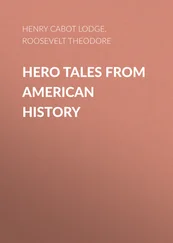Americans had much to admire as well as much to criticize about the “thousand days” of the Kennedy administration, but the youthful president’s sudden, terrible martyrdom cast an aura of enchantment and heroism over Kennedy and his programs. President Johnson was able to refashion the JFK social programs that had floundered in Congress and, in the name of the slain president, oversee their passage into law. When Johnson ran for president in his own right in 1964, he called upon America to build a “Great Society,” one that “rests on abundance and liberty for all.”
The phrase Great Society became, like FDR’s New Deal, the label for an ambitious, idealistic package of legislation, including Medicare, which helped finance medical care for Americans over 65; elementary, secondary, and higher education acts to enhance education and provide financial aid to college students; and legislation relating to what Johnson called a War on Poverty.
Of all the creations of the Great Society, none has had more lasting and profound impact than the Civil Rights Act of 1964. The act banned segregation and discrimination in public accommodations such as restaurants, theaters, and hotels, and it barred employers from discriminatory hiring practices based on race.
The Civil Rights Act of 1964 was followed the next year by a Voting Rights Act, which destroyed the last vestiges of local legislation intended to prevent or discourage African-Americans from voting. In 1968, at the end of the Johnson years, another civil rights act rendered discrimination by landlords and realtors illegal.
President Johnson’s Great Society was built in part on the memory of JFK and was also a result of the black political and social activism of the 1950s and 1960s. By the end of the Johnson years, equality in America was certainly not fully de facto—a fact of life-but it was at least de jure—a condition of law.
The Least You Need to Know
The modern civil rights movement began with the integration of the armed forces in 1947 and developed through a nonviolent program of civil disobedience led by Dr. Martin Luther King, Jr., and others.
Although John F. Kennedy attempted to create an ambitious program of civil rights and social legislation, it was the administration of Lyndon Baines Johnson that secured passage of legislation creating the “Great Society.”
The year before Rosa Parks’s bus ride, the U.S. Supreme Court effectively declared segregation illegal when, on May 17, 1954, it handed down a decision in the case of Brown v. Board of Education of Topeka, Kansas. The decision was the culmination of a long series of lawsuits first brought against segregated school districts by the National Association for the Advancement of Colored People (NAACP) in the 1930s. Repeatedly, the Supreme Court ruled consistently with its 1896 decision in Plessy v. Ferguson that found “separate but equal” accommodations for blacks constitutional as long as all tangible aspects of the accommodations were, indeed, equal. But in 1954, Thurgood Marshall (1908-93; in 1967, he would become the first African-American appointed to the Supreme Court) and other NAACP lawyers demonstrated that segregated school systems were inherently unequal because of intangible social factors. The high court agreed. Desegregation of the nation’s schools became the law of the land. In some places, the process of integration proceeded without incident; in others, it was accompanied by violent resistance that required the intervention of federal marshals and even federal troops.
Martin Luther King, Jr., spoke these words from the steps of the Lincoln Memorial, Washington, D.C., on August 28, 1963:
“ . . I have a dream that one day on the red hills of Georgia sons of former slaves and the sons of former slave owners will be able to sit down together at the table of brotherhood. I have a dream that one day even the state of Mississippi, a state sweltering with the heat of injustice, sweltering with the heat of oppression, will be transformed into an oasis of freedom and justice.
“I have a dream that my four little children will one day live in a nation where they will not be judged by the color of their skin but by the content of their character. I have a dream today. I have a dream That one day-down in Alabama, with its vicious racists, with its governor having his lips dripping with the words of interposition and nullification, one day right there in Alabama little black boys and black girls will be able to join hands with little white boys and white girls as sisters and brothers.
“… This is our hope. This is the faith that I go back to the South with. With this faith, we will be able to hew out of the mountain of despair a stone of hope… “
The great African-American poet Langston Hughes (1902-1967) asked in a poem called “Harlem,”
“What happens to a dream deferred? Does it dry up
like a raisin in the sun?…Or does it explode?”
Brinkmanship was a word coined during the Cold War. It signified winning an advantage in international politics by demonstrating a willingness to push a dangerous situation to the brink of nuclear war.
In This Chapter
Background of the Vietnam War
Escalation and deception
Protest on the home front
U.S. withdrawal and communist victory
In 1964, the beacon of the Great Society shone brightly. Motivated by the memory of JFK and energized by the moral passion of Lyndon Johnson, the program of social reform, even more ambitious than the New Deal had been, seemed unstoppable.
Then, on August 2, 1964, the American destroyer Maddox, conducting electronic espionage in international waters, was attacked by North Vietnamese torpedo boats. Undamaged, Maddox was joined by a second destroyer, the C. Turner Joy. On August 4, both ships claimed to have been attacked. Although evidence of the second attack was thin (later it was discovered that the second attack had not occurred), President Johnson ordered retaliatory air, strikes and asked Congress for support. On August 7, the U.S. Senate passed the Tonkin Gulf Resolution., giving LBJ almost unlimited authority to expand American involvement in a long-standing war in a part of the world few Americans knew or cared much about.
That war would wreck the Great Society, nearly tear the United States apart, spawn an idealistic albeit drug-oriented youth counterculture, and cost the lives of 58,000 young Americans.
World War II left much of the world, including Southeast Asia, dangerously unstable. During the 19th century, France had colonized Laos, Cambodia, and Vietnam, and when France caved in to Germany in 1940, the Japanese allowed French colonial officials puppet authority in Southeast Asia until the Allied liberation of France in 1945. Japan then seized full control, purging the French police agencies and soldiery that had kept various nationalist groups in check. In Vietnam, Ho Chi Minh (1890-1969) led the most powerful of these independence-seeking groups, the Viet Minh. Aided by U.S. Office of Strategic Services (OSS) personnel, Viet Minh fought a guerrilla war against the Japanese occupiers.
When the war in Europe ended, Allied forces were free to turn their attention to Vietnam (and the rest of Southeast Asia). Nationalist Chinese troops (under Chiang Kai-shek) occupied northern Vietnam. The British secured southern Vietnam for re-entry of the French, who ruthlessly suppressed supporters of Ho Chi Minh. A state of low-level guerrilla warfare developed, which escalated sharply when Chiang Kai-shek, hoping to checkmate communist ambitions in the region, withdrew from northern Vietnam and turned that region over to French control.
Читать дальше












